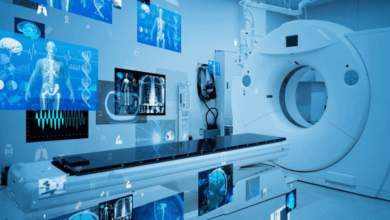The Benefits of Professional Medical Imaging

Professional medical imaging has become an indispensable tool in modern healthcare, playing a crucial role in diagnosing, monitoring, and treating a wide range of medical conditions. From routine check-ups to complex diagnostic procedures, medical imaging provides detailed and accurate insights into the human body, helping healthcare providers make informed decisions that significantly impact patient outcomes. The benefits of professional medical imaging extend far beyond simple X-rays; advanced techniques such as MRI, CT scans, ultrasound, and nuclear medicine offer a comprehensive view of the body’s internal structures and functions. This article delves into the various benefits of professional medical imaging and why it is essential for effective healthcare.
Accurate and Early Diagnosis
One of the most significant benefits of professional medical imaging is its ability to provide accurate and early diagnosis of various health conditions. Early detection is often the key to successful treatment, particularly for serious conditions such as cancer, heart disease, and neurological disorders.
Medical imaging allows doctors to see inside the body in a non-invasive manner, revealing abnormalities that may not be detectable through a physical examination alone. For instance, a mammogram can detect breast cancer at an early stage, even before a lump is felt. Similarly, a CT scan can identify small tumors, blood clots, or other anomalies that might be missed without imaging.
Accurate imaging is crucial because it guides treatment decisions. For example, in the case of cancer, imaging helps determine the size, location, and spread of the tumor, which is essential for planning surgery, radiation, or chemotherapy. Without precise imaging, these decisions would be based on less reliable information, potentially leading to suboptimal outcomes.
Personalized Treatment Plans
Professional medical imaging plays a vital role in creating personalized treatment plans tailored to the specific needs of each patient. By providing detailed images of the body’s internal structures, imaging allows doctors to understand the unique characteristics of a patient’s condition.
For example, in cardiovascular care, imaging techniques such as echocardiograms and coronary angiograms provide detailed information about the heart’s structure and function. This information is critical for diagnosing conditions such as heart disease, valve disorders, or congenital heart defects. Based on the imaging results, cardiologists can develop a treatment plan that addresses the specific issues identified, whether it involves medication, lifestyle changes, or surgical intervention.
In oncology, imaging is essential for staging cancer, which involves determining the extent of the disease. Accurate staging is crucial for selecting the most appropriate treatment approach, such as surgery, radiation, or systemic therapies like chemotherapy or immunotherapy. Imaging also allows doctors to monitor the effectiveness of treatment, making adjustments as needed to improve outcomes.
Minimally Invasive Procedures
Medical imaging has revolutionized the way many procedures are performed, enabling minimally invasive techniques that reduce the need for large incisions, shorten recovery times, and minimize risks for patients. These procedures, often guided by imaging technology, offer significant advantages over traditional surgical approaches.
For example, image-guided biopsies allow doctors to take tissue samples from suspicious areas with precision, reducing the need for more invasive surgical biopsies. Similarly, interventional radiology procedures, such as angioplasty or the placement of stents, use real-time imaging to guide the treatment of conditions like blocked arteries or aneurysms. These minimally invasive techniques often result in less pain, shorter hospital stays, and quicker recoveries compared to open surgery.
In addition to reducing the physical impact on patients, imaging-guided procedures also enhance the precision and accuracy of the treatment. By allowing doctors to see exactly where they are working within the body, imaging reduces the risk of complications and improves the overall success of the procedure.
Monitoring and Tracking Disease Progression
For patients with chronic conditions or those undergoing long-term treatment, professional medical imaging is an invaluable tool for monitoring and tracking disease progression. Regular imaging studies allow doctors to assess how a condition is evolving over time and how well it is responding to treatment.
For example, in the management of chronic diseases such as multiple sclerosis, imaging techniques like MRI are used to monitor the progression of the disease by tracking changes in the brain and spinal cord. This information is critical for making decisions about continuing, adjusting, or changing treatment strategies.
In oncology, follow-up imaging is often used to monitor patients who have been treated for cancer. Imaging helps detect any recurrence of the disease at an early stage, when it may be more treatable. It also allows doctors to assess the effectiveness of ongoing treatments and make necessary adjustments to improve patient outcomes.
Enhanced Patient Safety
Medical imaging contributes to enhanced patient safety by providing non-invasive or minimally invasive ways to diagnose and treat various conditions. The ability to visualize internal organs and tissues without the need for exploratory surgery reduces the risk of complications associated with more invasive diagnostic methods.
For instance, imaging techniques such as MRI or ultrasound do not involve ionizing radiation, making them safer options for certain populations, such as pregnant women and children. Even when radiation-based imaging is necessary, advancements in technology have led to the development of low-dose CT scans, which significantly reduce the amount of radiation exposure while still providing high-quality images.
Moreover, the use of imaging in emergency settings, such as trauma care, allows for rapid and accurate assessment of injuries, enabling timely and appropriate interventions. This swift action can be life-saving, particularly in cases of internal bleeding, fractures, or other critical injuries that may not be immediately apparent.
Improved Outcomes in Emergency Medicine
In emergency medicine, time is often of the essence, and professional medical imaging plays a crucial role in the rapid diagnosis and treatment of acute conditions. Imaging technologies such as X-rays, CT scans, and ultrasounds are routinely used in emergency departments to assess patients with a variety of urgent medical issues.
For example, in cases of suspected stroke, a CT scan can quickly determine whether the stroke is caused by a blockage or a bleed in the brain. This information is vital for determining the appropriate treatment, as the interventions for ischemic and hemorrhagic strokes differ significantly. Prompt imaging and diagnosis can lead to faster treatment, which is critical for minimizing brain damage and improving patient outcomes.
Similarly, in trauma care, imaging is used to rapidly assess injuries to the head, spine, chest, and abdomen. Identifying life-threatening conditions such as internal bleeding or organ damage through imaging allows for immediate intervention, which can be the difference between life and death in critical situations.
Supporting Preventive Health Measures
Medical imaging is not only used for diagnosing existing conditions but also plays a vital role in preventive health care. Through regular screening and early detection, imaging can identify potential health issues before they develop into more serious conditions, allowing for early intervention and improved long-term outcomes.
For example, routine mammograms are recommended for women to screen for breast cancer, often detecting tumors at an early stage when they are most treatable. Similarly, DEXA scans are used to assess bone density and identify osteoporosis, allowing for early treatment to prevent fractures.
Lung cancer screening with low-dose CT scans is another preventive measure that can detect early-stage lung cancer in high-risk individuals, such as long-term smokers. Early detection through screening significantly increases the chances of successful treatment and long-term survival.
Facilitating Research and Advancements in Medicine
Professional medical imaging is not only essential for patient care but also plays a critical role in medical research and the development of new treatments. Advanced imaging techniques provide researchers with detailed insights into the human body, enabling the study of diseases at a molecular and cellular level.
For instance, functional MRI (fMRI) allows researchers to study brain activity in real-time, leading to breakthroughs in understanding neurological and psychiatric disorders. Similarly, PET scans are used in cancer research to study tumor metabolism and the effectiveness of new therapies.
Imaging also plays a key role in the development and testing of new medical devices and surgical techniques. By providing precise visualizations of the body’s internal structures, imaging helps researchers and clinicians refine their approaches, leading to safer and more effective treatments.
Supporting Patient Education and Communication
One often overlooked benefit of professional medical imaging is its role in patient education and communication. Imaging results can help patients better understand their medical conditions and the rationale behind their treatment plans.
When patients see images of their own bodies, whether it’s an X-ray of a broken bone, an MRI of a spinal disc herniation, or an ultrasound of a developing fetus, it provides a tangible understanding of their health status. This visual information can be instrumental in helping patients grasp the severity of a condition, the importance of following treatment recommendations, or the progress they are making.
Moreover, imaging can facilitate communication between healthcare providers and patients. By reviewing images together, doctors can explain the details of a condition or the goals of a procedure in a clear and visual way. This collaborative approach often leads to increased patient engagement and adherence to treatment plans.
Reducing Healthcare Costs
While medical imaging involves costs, it can also contribute to overall cost savings in healthcare by preventing the need for more invasive and expensive diagnostic procedures, reducing hospital stays, and ensuring that conditions are diagnosed and treated early.
For example, by accurately diagnosing a condition with imaging, unnecessary exploratory surgeries can be avoided, reducing both the risks to the patient and the associated healthcare costs. Early detection of diseases like cancer or cardiovascular conditions through imaging can also lead to less expensive treatments and better long-term outcomes, further reducing overall healthcare expenditures.
Additionally, by enabling precise and effective treatment planning, medical imaging helps avoid the costs associated with trial-and-error approaches to treatment. For instance, knowing the exact location and size of a tumor before surgery allows for more precise removal, potentially reducing the need for additional treatments or surgeries.
Enhancing Multidisciplinary Care
In complex medical cases, multidisciplinary care—where specialists from different fields collaborate on a patient’s treatment plan—is often required. Professional medical imaging serves as a common language that brings together various specialties, providing a comprehensive view of the patient’s condition.
For instance, in cancer care, imaging results are typically reviewed by a team that may include oncologists, radiologists, surgeons, and other specialists. These teams use the detailed images provided by MRI, CT scans, PET scans, and other modalities to plan the most effective treatment strategy, whether it involves surgery, radiation, or chemotherapy.
This collaborative approach, facilitated by imaging, ensures that all aspects of the patient’s condition are considered, leading to more coordinated and effective care. It also allows for better communication between different specialists, ensuring that everyone involved in the patient’s care is on the same page.
FAQs
What are the most common types of medical imaging?
The most common types include X-rays, MRI (Magnetic Resonance Imaging), CT (Computed Tomography) scans, ultrasound, and PET (Positron Emission Tomography) scans.
How does medical imaging improve diagnosis?
Medical imaging provides detailed, accurate visualizations of the body’s internal structures, allowing doctors to detect abnormalities, diagnose conditions early, and plan effective treatments.
Is medical imaging safe?
Yes, medical imaging is generally safe, especially with advancements in technology that minimize radiation exposure and improve the precision of imaging. Non-invasive methods like MRI and ultrasound involve no radiation at all.
How often should medical imaging be performed?
The frequency of medical imaging depends on individual health needs, risk factors, and the advice of your healthcare provider. Some imaging, like mammograms, may be recommended annually, while others are only necessary as part.




